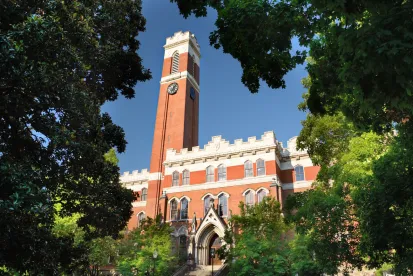The Supreme Court of the United States, on June 30, 2023, struck down President Biden’s student loan relief program that was set to provide partial debt cancellation to approximately 40 million student loan borrowers. As a result of this decision, employers may want to consider implementing or expanding their education assistance programs.
Quick Hits
-
The Supreme Court held that the HEROES Act does not authorize President Biden’s student loan debt cancellation program.
-
Several recent legal changes enable employers to offer education assistance programs as part of their benefits packages.
The Supreme Court held that the Higher Education Relief Opportunities for Students (HEROES) Act of 2003, which allows the Secretary of Education to “waive or modify” federal student loans, does not authorize President Biden and the U.S. Department of Education’s plans to cancel student loan debt.
The 6–3 ruling comes in Biden v. Nebraska, a case brought by six states challenging the program—one of two challenges before the high court. In the other case, Department of Education v. Brown, the court unanimously held that two individual borrowers lacked standing to challenge the program because they had not shown they suffered an injury by not having their loans forgiven.
The student debt relief program, announced by President Biden and the Department of Education, would have made student loan borrowers who earn $125,000 or less ($250,000 or less for married filers and heads of household) eligible for $10,000 in student loan debt cancellation or $20,000 in cancellation for those borrowers who had received Pell Grants. The Congressional Budget Office (CBO) estimated that the program would have cost $400 billion in present value over the next three decades.
The high court’s decision means that repayment will begin and interest will start accruing after August 29, 2023, following the three-year pause due to the COVID-19 pandemic. The pause cannot be extended without congressional approval as part of the deal made in Congress to raise the debt ceiling.
High Court Challenges
The student debt relief program came to the Supreme Court in two cases. The first case, Biden v. Nebraska, was filed by six states challenging the Department of Education’s student debt relief plan. At issue was whether states have Article III standing to challenge the program and whether the plan exceeded the statutory authority under the HEROES Act. That law, which was passed in the wake of the September 11 attacks, granted the U.S. Secretary of Education authority to waive or modify existing provisions for borrowers in connection with a “national emergency.”
Specifically, the states argued that Missouri has standing because the program would discharge nearly half of the loans serviced by the Higher Education Loan Authority of the State of Missouri (MOEHLA), one of the largest servicers of federal student loans, and cause it to lose approximately 40 percent of its operating revenue. The Biden administration argued that the harm is not enough to give the state of Missouri standing to challenge the program, which if stopped would deny “vital relief to millions” of borrowers and leave them “worse off in relation to their student loans” than before the pandemic.
The second case, Department of Education v. Brown, was brought by two student loan borrowers, one who was not eligible for cancellation because her loans are with private lenders and another who was eligible for the $10,000 in cancellation but not the full $20,000 for borrowers who had Pell Grants. They argued that the program exceeded the authority granted under the HEROES Act and needed to at least go through a negotiated rulemaking process with notice and opportunity for comment. They argued that bypassing that process denied them the opportunity to argue for their student loans to be forgiven.
The Biden administration argued that they lacked standing because their sought relief is a “mismatch” for their alleged injury as it would result in a ruling that the HEROES Act “doesn’t authorize loan forgiveness at all,” which “would mean that no one could get any HEROES Act relief.”
Impact on Employers
The ruling means that the pause on federal student loan payments and interest accrual will end without the partial student debt cancellation that tens of millions of borrowers were set to receive under the president’s debt relief program. There are more than 45 million Americans with student loan debt, and the federal government currently holds more than $1.6 trillion in student loan balances.
A growing number of employers are providing student loan benefits to employees. Given the end of the repayment pause, employer-provided student loan relief benefits may be even more valuable as a recruiting and retention tool, particularly for those employers with employees in professions that require additional education.
In recent years, several changes have been made that enable employers to offer education assistance programs as part of their benefits packages.
-
As part of the SECURE 2.0 Act of 2022 retirement legislation, which was signed by President Biden on December 29, 2022, employers may provide matching contributions to an employee’s 401(k), 403(b), or 457(b) retirement plan when that employee makes a “qualified student loan payment” by deeming such payments as elective deferrals or elective contributions. Plan sponsors will be able to rely on annual certifications from employees that they have made eligible student loan payments with no additional investigation required. Employers may begin implementing the match in plan years beginning January 1, 2024.
-
The Coronavirus Aid, Relief, and Economic Security (CARES) Act, enacted in 2020, allowed employees to exclude up to $5,250 from income for tax purposes if their employers made payments on qualifying student loans through education assistance programs. This was extended through December 31, 2025, by the Consolidated Appropriations Act, 2021.
-
In January 2023, the Department of Education proposed regulations that would amend the Revised Pay As You Earn (REPAYE) income-driven repayment option to offer $0 monthly payments to individual borrowers who make less than $30,600 per year or any borrower in a family of four who makes less than $62,400.
Next Steps
With such a large amount of the workforce dealing with student loan debt, some employers are considering instituting or expanding existing education assistance programs that take advantage of recent student debt relief measures made by the federal government. Specifically, employers can provide 401(k) plan matching contributions for participants’ student loan payments under the SECURE 2.0 Act, or plan to expand existing education assistance programs to include qualifying student loan payments through December 31, 2025. At the same time, if recently proposed changes are finalized, more lower-income workers may be eligible for $0 monthly payments or reduced monthly payments.





 />i
/>i
